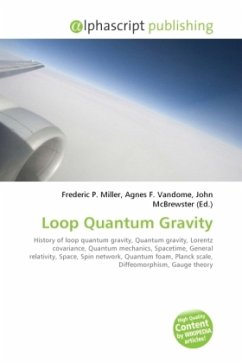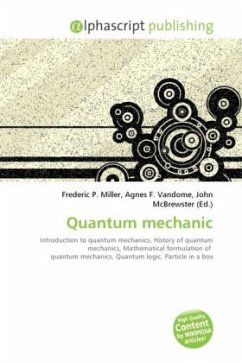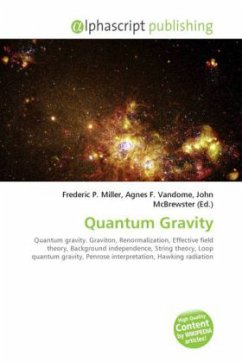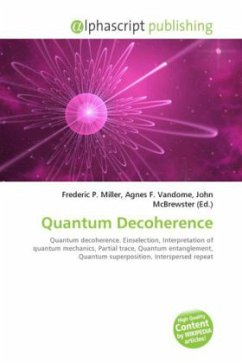
History of Quantum Mechanics
Versandkostenfrei!
Versandfertig in 6-10 Tagen
26,99 €
inkl. MwSt.

PAYBACK Punkte
13 °P sammeln!
The history of quantum mechanics as this interlaces with history of quantum chemistry began essentially with the 1838 discovery of cathode rays by Michael Faraday, during the 1859-1860 winter statement of the black body radiation problem by Gustav Kirchhoff, the 1877 suggestion by Ludwig Boltzmann that the energy states of a physical system could be discrete, and the 1900 quantum hypothesis by Max Planck that any energy radiating atomic system can theoretically be divided into a number of discrete energy elements (epsilon) such that each of these energy elements is proportional to the frequenc...
The history of quantum mechanics as this interlaces with history of quantum chemistry began essentially with the 1838 discovery of cathode rays by Michael Faraday, during the 1859-1860 winter statement of the black body radiation problem by Gustav Kirchhoff, the 1877 suggestion by Ludwig Boltzmann that the energy states of a physical system could be discrete, and the 1900 quantum hypothesis by Max Planck that any energy radiating atomic system can theoretically be divided into a number of discrete energy elements (epsilon) such that each of these energy elements is proportional to the frequency with which they each individually radiate energy, where h is a numerical value called Planck s constant. Then, in 1905, to explain the photoelectric effect (1839), i.e. that shining light on certain materials can function to eject electrons from the material, Albert Einstein postulated, as based on Planck s quantum hypothesis, that light itself consists of individual quantum particles, which later came to be called photons (1926)












